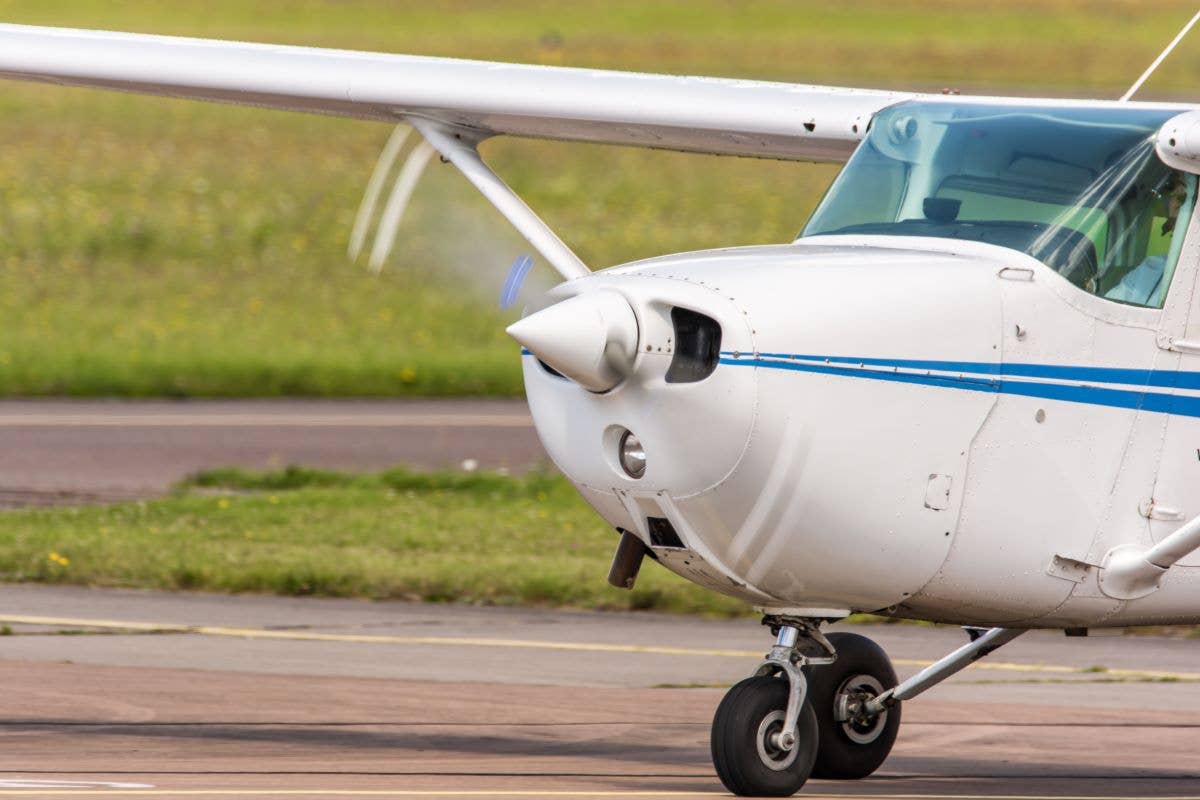
“The best part of my job is not being in an office. It doesn’t feel like work a lot of the time,” says 31-year-old pilot Oscar Mims. “We get a lot of time off, but I choose to work a little more than most guys do.” Oscar Mims
Oscar Mims knew at a young age that he wanted to be an airline pilot. His uncle is a pilot for American, and his mother is a flight attendant for Delta. The family’s airline travel benefits allowed him to see the country and develop a sense of what it would be like to work as an airline pilot. He earned his private pilot certificate at a local airport near his home in Thomasville, Georgia, during high school, and went to work, not college, after graduation while he decided where to complete his commercial pilot training.
Mims says ATP’s career pilot program was a good choice for him financially. “It was economical and fast. For me, it was the speed at which they can get you through the program. I think that it’s good to have that experience because that’s exactly how airline training is. No matter where you go, you’d better learn how to pick up information quickly and take the important stuff and run with it.”
After graduating from ATP in 2006, Mims instructed at the Trenton, New Jersey, location for less than a year before he was hired by Atlantic Southeast Airlines (ASA) to fly right seat in a CRJ200.
Once he started flying for ASA, Mims enrolled in an online bachelor’s degree program through Utah Valley University. “It was tough; it’s not for everybody. I can see why a lot of pilots never do it, but it definitely will limit one’s career choices without that degree.”
He flew for ASA until 2011, when he seized an opportunity to gain some unique international experience. “My whole reason for leaving ASA was stagnation,” he says. “At the time, you had to have 1,000 hours PIC to get an interview anywhere. I had very few options, so for me, being young and single, it was a perfect time to look overseas.”
He moved to Dubai, United Arab Emirates, and began flying a Boeing 737 for Fly Dubai, a subsidiary of Emirates. “The experience was good, flying into Iran and Afghanistan. You learn a lot about flying around terrain. The money was good at the time, and the opportunity to upgrade was good.” Mims was able to upgrade to captain at just 26 years old. But despite the adventure and glamour of an international jet-flying job, Mims longed to return home. In 2016, he resigned from Fly Dubai, moved back to the States and soon began flying for a major U.S. airline.
With 5,400 hours of 737 experience in his logbook already, including more than 1,000 as PIC, Mims, who is 31 now, thinks he will be able to upgrade to captain within a year or two. He recognizes the great responsibility that comes with moving to the left seat. “It’s one thing to be eligible for the upgrade, and another to decide whether you’re really ready for it,” he says. “With quick upgrades at most airlines now, even at the majors, it is something pilots should really think about. Think about what happened with [Capt. Sully] Sullenberger. If you think you’re ready [to be captain], think about how you’d handle a situation like that.”
Mims says regional airline first officers today can be eligible for an upgrade in about a year and a half to two years, after having logged 1,000 hours with their company. However, as an alternative, he would suggest bypassing that and moving directly to the right seat of a larger jet with a low-cost carrier like Southwest or Spirit, gaining an A320 or 737 type rating in the process.
“The best part of my job is not being in an office. It doesn’t feel like work a lot of the time,” he says. “We get a lot of time off, but I choose to work a little more than most guys do.” He’s currently based in New York, but his long-term plan is to be in Atlanta. “My schedule is very easy to manage, and a typical four-day trip is not fatiguing for me thanks to good work rules. It’s easy to balance work and personal life.”

Sign-up for newsletters & special offers!
Get the latest FLYING stories & special offers delivered directly to your inbox






